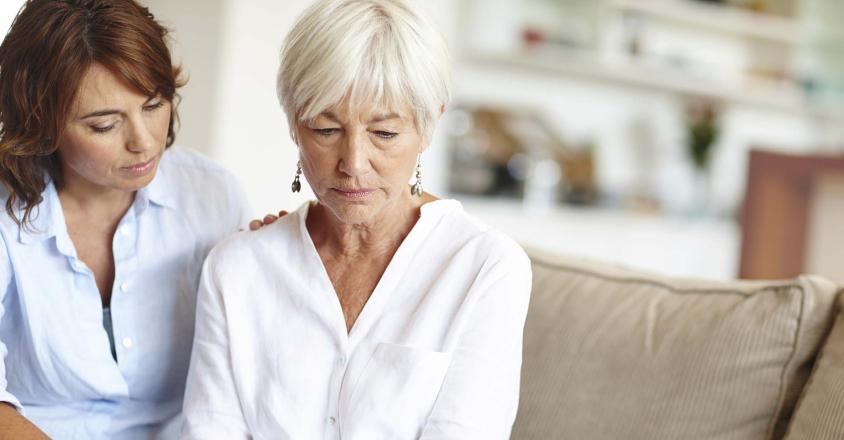

Found a lump? When you should worry about breast cancer
Understanding cysts, lumps, and growths
If you have found a lump in one of your breasts, most women begin to worry about breast cancer. After all, a lump can, in rare cases, mean cancer.
Since it can be difficult to tell what is causing a lump in your breast, you should call your doctor if you feel a new lump, or if you notice a distinct lump that is not like the rest of your breast.
The following are types of breast lumps and their symptoms.
Cysts and abscess lumps in either breast
Cysts are fluid-filled sacs in the breast. They feel smooth or rubbery and move about under the fingers. They can be quite painful or tender, or they may be painless. Cysts are caused by the hormones that control the menstrual cycle. Cysts are rare in women older than 50 and are not related to breast cancer. If you have a cyst, your doctor may drain (aspirate) it to help relieve the pain and confirm the diagnosis.
Sebaceous cysts are caused by plugged ducts at the site of a hair follicle. Like a cyst, they move freely under the fingers. Hormone stimulation or injury may cause them to enlarge. A sebaceous cyst that does not cause symptoms does not require medical treatment. Removal usually involves making a small incision in the skin and removing the entire sac so that it does not return.
Abscesses are pockets of infection within the breast. They may be quite painful, and the skin over the breast may be red or feel hot or solid. You may feel feverish or ill. Abscesses are treated with antibiotics and surgery to drain the abscess. They are most common in women who are breastfeeding.
Fatty lumps may or may not be painful
Fat necrosis is a condition in which the normal fat cells of the breast go through a change and become round lumps. The lumps may or may not be painful and may be firm. The skin over the lump may be red or look bruised. Fat necrosis may occur after a bruise or other injury to the chest or breast and can occur from weeks to years after an injury. Fat necrosis usually goes away without treatment but can form permanent scar tissue that may show up as an abnormality on a mammogram.
Lipomas are noncancerous lumps of fatty tissue. They can be small or large. A woman may have just one or several lipomas at once.
Smooth, round growths in your breast and nipple discharge
Adenomas are noncancerous abnormal growths of the glandular tissue in the breast. The most common growths, fibroadenomas, are somewhat more common in women in their 20s and in women of African descent. They usually feel round and firm and have smooth borders. They may move a little under the fingers, be tender, and change with the menstrual cycle. Adenomas are not related to breast cancer.
Intraductal papillomas are growths in the ducts of the breast. They usually feel like lumps just under the nipple and can cause a bloody discharge from the nipple. Women close to menopause may have only one growth. Several growths in both breasts are more common in younger women.
Breast cancer usually feels like a hard or firm lump (nodule). It usually is irregular in shape (it does not have smooth edges) and may feel like it is attached (fixed) to skin or tissue deep inside the breast so that it cannot be moved without moving breast tissue. Breast cancer is rarely painful and can occur anywhere in the breast or nipple.
Blood clots can feel like a breast lump
Blood clots in a vein (thrombophlebitis) can feel like a lump. The phlebitis affects the large vein that normally crosses the chest to the underarm area (axilla). Symptoms include pain, redness, warmth, and lumpiness along the course of the vein. Blood clots in the breast or on the chest wall are rare.
Supporting Health Care in Our Communities
The Genesis HealthCare Foundation is here to promote charitable support for Genesis HealthCare System.
General breast lumpiness
Generalized breast lumpiness usually feels like lots of little bumps (nodularity) or as though some areas of the breast are thicker or denser than other areas. Your breasts also may feel tender. The lumps may occur in both breasts around the nipple and in the upper, outer part of the breasts, especially before your menstrual period. The lumps may come and go and change size in just a few days.
Generalized lumpiness was once thought to be abnormal and was even called fibrocystic breast disease, but it is so common that it is now considered normal. Breast lumpiness usually goes away after menopause but may be found in women who are taking hormone therapy after menopause.
Do monthly breast exams and talk to your doctor
Even though breast lumps are common, especially in women ages 30 to 50, become familiar with your own body, and watch for changes. And when you find changes, talk to your doctor.
Many women might be willing to accept the benefit of finding cancer early at the risk of the anxiety of a false positive. And sometimes it helps just to find out that a lump you discovered is not cancerous. So talk to your doctor about new lumps or other symptoms that cannot be explained or that don’t go away in a few weeks.
Make an appointment today
Call Genesis Central Scheduling at (740) 454-4242 to schedule a mammogram. To make an appointment with a provider at the Genesis Breast Care Center, call (740) 454-5221.
Genesis HealthCare System’s Health and Wellness content conveniently provides accurate and helpful information. Your health history and current health may impact suggestions provided through our Health and Wellness content. Although we hope this information is helpful, it is not a substitute for your doctor's medical advice. Before making any significant changes, please consult your doctor.



